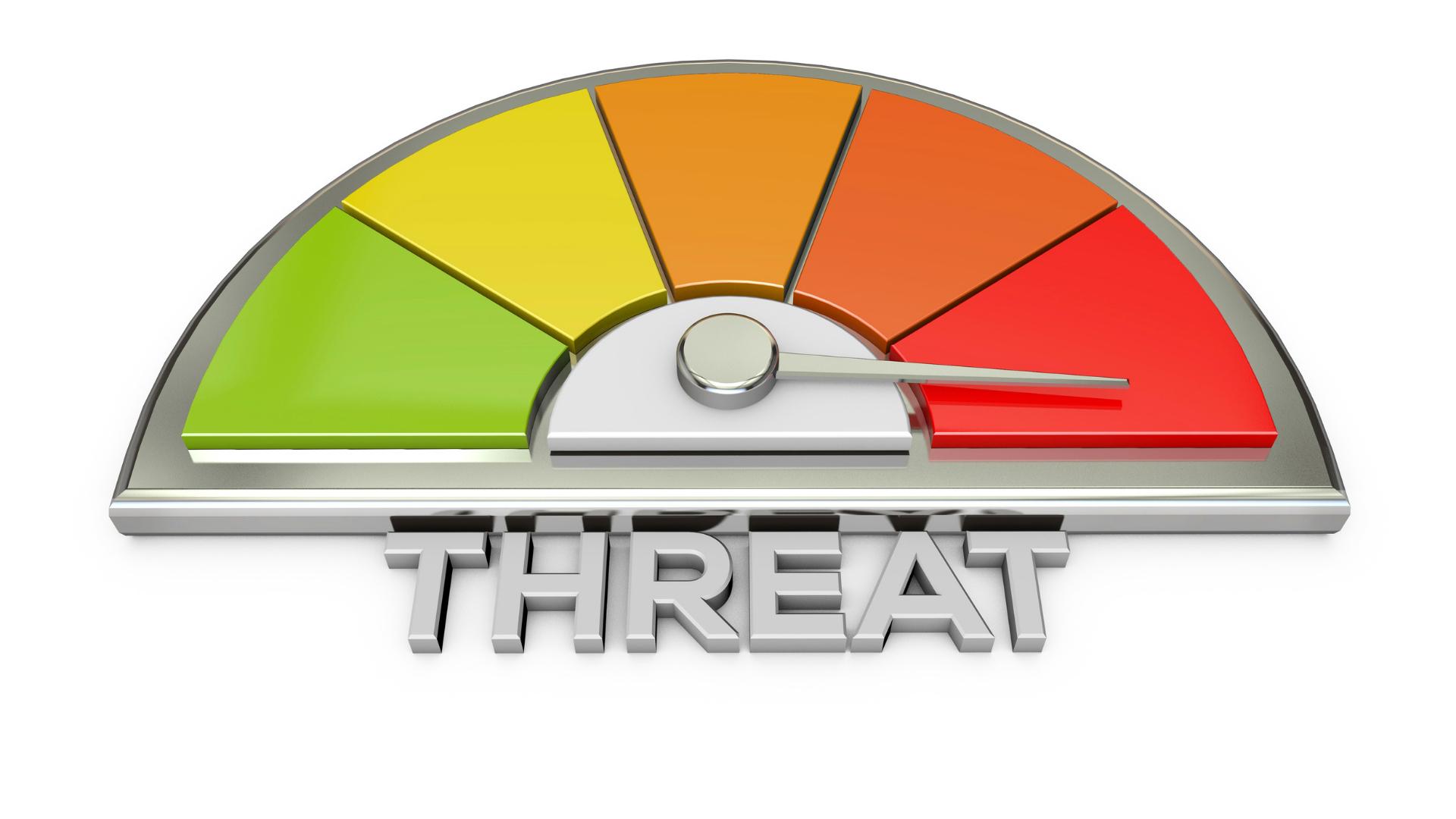Depending on your business’s situation, you might think the competition is either a threat or a simple annoyance. There is no way to generally define the concept of "competition" for all businesses—there are different types and ways in which they affect your business. In this article, we’ll try to define the competition and the actions you must take to address it by tackling the following topics:
- The importance of handling your restaurant’s competition
- The advantages and disadvantages of dealing with or neglecting this issue
- Steps to assess how much of a threat the competition is to your business
- Steps to directly and indirectly deal with the competition, depending on how much of a threat they are
Whether the competition is eating your business or you don’t truly give it a second thought, this article will help guide your actions. Even if your business is not threatened right now, are you prepared to deal with possible issues? Let’s get you ready!
The Importance of Handling Restaurant Competition

Understanding and addressing competition is crucial for restaurant survival and growth, even if it's not a threat to your business right now. This is common knowledge or restaurant-owner lore among older generations. Some say the competition ate their restaurant’s profits by taking customers away. Even though, as business owners, we can empathize with them, most of the time it’s easy to see the competition coming. As a foreign saying goes, a foretold war doesn’t kill any soldiers—you should always be aware of the direct and indirect competition to take the necessary actions before catastrophe strikes. Here are some of the consequences of a lack of preparation:
- Loss of market share: competitors who actively engage their audiences and offer appealing alternatives can easily attract your customers. That will directly make your business lose money and become less profitable in the long run.
- Reduced brand awareness: if you’re not aware of your competitor's marketing and branding strategies, you can make the mistake of not having countermeasures in place. For example, if your direct competitors create a successful offer or promotion and market it perfectly, your restaurant can become irrelevant to your customers in just a few days.
- Employee discouragement: if your staff is proud to work with you, they will feel proud if you crush the competition, as it’s a team effort. The opposite is true if your competition dominates your business.
- Missed growth opportunities: failing to adapt to market trends and customer preferences can blind you to potential opportunities for expansion, revenue diversification, and overall business growth.
- Increased marketing and advertising costs: reacting to competition after it has significantly impacted your business will require costly marketing, offers, and promotions to regain customer attention. That can reduce the profitability of your business by a noticeable margin.
- Potential business closure: in the worst-case scenario, a complete lack of preparation for the competition can render your restaurant unable to compete effectively, ultimately leading to financial hardship and even business closure.
Having the right strategy and approach to dealing with your restaurant’s competition allows you to avoid all of these issues and unforeseen threats. In most cases, it’s not entirely about survival. However, keep in mind that these issues might be affecting your business without your knowledge. If you’ve tried to solve certain problems like low profitability, high employee turnover, and underperforming marketing strategies unsuccessfully, your competition might be the underlying cause.
How to Study the Competition and Assess How Much of a Threat They Are

After all the fearmongering we’ve done, you might be inclined to go to the business next door and punch the owner in the nose. However, fear not, because all of these issues might not be occurring in your restaurant! If you’re not aware of the way the competition affects your business, below we detail the steps you can take to figure that out before you take any action. And, by the way, please don’t hurt anybody.
1. Identify Direct and Indirect Competitors

The first step is to identify the two main types of competitors your restaurant has:
- Direct competitors: restaurants offering similar cuisine and catering to the same target market.
- Indirect competitors: restaurants offering different cuisines but serving the same geographic area or demographic.
As you can see, to take this first step, you must gather all the information you know and have about your target market. This is the first step because not all restaurants have the same competition—for example, if your restaurant has a unique concept, you might only have indirect competitors. On the other hand, if your restaurant is fast food, chances are you have a lot of competitors. Step 1.1 is creating a list of all the direct and indirect competitors; you’ll need it for the next step.
Tips on How to Find Your Direct Competitors
Finding your direct competitors will prove easier or more difficult, depending on your type of business. Keep in mind that some restaurant concepts are more common than others. You don’t have to look forever either—if you can’t find a lot of direct competitors, look for indirect ones.
- Search online directories and platforms: platforms like Google Maps, Yelp, and OpenTable can help you find restaurants offering similar cuisine types in your city.
- Explore local food blogs and publications: many local publications highlight restaurants; you can search them to find businesses similar to yours.
- Visit nearby restaurants: explore nearby restaurants to experience their offerings, pricing, and overall atmosphere. It’s a good idea to check them out in person.
Tips on How to Find Your Indirect Competitors
Finding indirect competitors is a bit trickier:
- Consider alternative cuisines: analyze if restaurants offering different cuisines cater to the same target market based on demographics, income levels, and dining occasions.
- Look for similar price points: identify restaurants with similar price points, as they might be considered alternatives regardless of cuisine type.
- Analyze delivery and takeout options: if your restaurant offers delivery and takeout, consider restaurants with similar options, even if they have different dining formats.
- Check social media, browsers, and local publications: look for all the restaurants in your city—you can also reduce the number of restaurants by looking at the ones closest to yours. This will help you create a comprehensive list using the other factors listed above.
2. Conduct Thorough Research on Each Competitor

Once you have the lists, or while creating them, you can gather the following information:
- Their menu items, pricing, service offerings, and customer reviews.
- Analyze their online presence, including their website, social media platforms, and online ordering systems.
- You can also take a look at their marketing materials, voice, and tone, among others.
- Again, you can gather more detailed information in person, which will prove invaluable later on.
3. Evaluate Their Strengths and Weaknesses

Once you have created the lists, you can categorize each of the restaurants according to their strengths and weaknesses, or even threat levels, from low to normal, intermediate, and high. You can do so by using the following strategies:
- Identify their unique selling propositions (USPs) and what differentiates them from your restaurant.
- Assess their areas of weakness, such as limited menu options, poor customer service, or an outdated ambiance.
- Assess their strengths. That can be something they’re better at when compared to your business.
We highly recommend that you be as thorough and realistic as possible during this step. Another good idea is that if you decide to visit the competition, you take people with you who can share their opinions with you.
4. Determine Their Market Share and Customer Base

This one will be much harder to do, and you can skip it altogether if you don’t want to put too much effort into it. Many restaurant owners avoid this topic entirely because they can’t stop obsessing over it, which can be detrimental to their businesses. Still, if you feel your competitors are too big of a threat, you can go on and apply this step to find out if they are and be prepared. Here’s what you must do.
Estimate Their Sales Volume
The key to this step is observation.
- Estimate based on average spending and traffic: by taking a look at competitor prices, menu items, and customer traffic, you can estimate average spending per customer. Multiply that by the estimated daily customer count to get a rough sales volume estimate.
- Analyze online ordering platforms: platforms like Grubhub and DoorDash often display restaurant popularity and order volume, offering insights into competitor sales.
- Track competitor social media engagement: high engagement on platforms like Instagram can indicate a strong customer base and potential sales volume. This is especially true if they have a website with an online ordering system or a similar alternative.
Assess Customer Loyalty

You must know how the Venn diagram common section of your customers and your competitors feel about both businesses, starting with theirs:
- Monitor online reviews and social media: analyze reviews and their sentiment and frequency of positive feedback to gauge customer loyalty. Basically, check out how many stars they have on their Google Business profile. This will help you understand their local SEO presence better.
- Track loyalty programs and promotions: observe competitor loyalty program memberships and participation in promotional offers to assess customer engagement. This can be done easily with some attention to detail and by checking how many people participate in social media contests.
- Ask your customers: conduct surveys or casual conversations to understand their perceptions of competitor loyalty programs and customer service.
By assessing these two aspects, you can define market share and popularity in comparison to your business, among other details that will be useful when determining their threat level. If you want more exact data on this, you can hire a freelancer to gather the data and create a more thorough competitor analysis.
5. Assess Their Overall Threat Level

Finally, you must assign a threat level to each competitor on both lists. Below is a simple example.
Analysis:
- Menu and Pricing: competitor offers lower prices and a wider menu variety, potentially attracting budget-conscious customers.
- Service: competitor offers faster service and delivery, which could appeal to customers seeking convenience.
- Online Presence: the competitor has a strong online presence with active social media pages and a user-friendly online ordering system.
- Marketing: the competitor uses a more casual tone and focuses on affordability and a family-friendly atmosphere.
- Strengths: the competitor has wider brand recognition, lower prices, and a strong online presence.
- Weaknesses: the competitor's menu lacks the authenticity and quality ingredients of my restaurant.
- Sales Volume: the competitor has a significantly higher sales volume, indicating a larger customer base.
Threat Level: Medium-High
While the competitor has strengths that could attract some of my customers, my restaurant's focus on quality and authenticity can still appeal to those seeking a more upscale dining experience. Still, the competitor's higher sales volume requires vigilance and strategic marketing to maintain market share.
Below, we’ll talk a little more about how you can create actionable strategies with the insights you gain from assessing your competitor’s threat level.
How to Beat Your Restaurant’s Direct and Indirect Competition

Now let’s talk about what you can actually do to handle your restaurant’s competitors effectively. Keep in mind that we shared the previous steps to allow you to laser-focus your attention on the competitors that are the biggest threats. Also, consider that you still must come up with logic-driven strategies that are relevant to your restaurant. We don’t encourage you to apply all of the changes you thought of when following the previous steps at once—sudden changes in your business can harm it more than help it.
Finally, instead of giving you solutions, we’ll give you ideas and tips on how to apply the solutions you come up with. This is because the solutions we can share won’t be relevant to all restaurants. We’ve already defined and explored solutions to several issues your restaurant might be facing on our blog.
1. Prioritize Based on Impact and Urgency

Prioritizing is the key to solving all the problems your restaurant is facing in the most efficient way possible. That’s why the previous steps were focused on getting you to figure out the biggest issues and the threat level of your competitors. The thing is, you’ll find that each competitor, regardless of its type, raises new challenges for your business. Assign an urgency level to each problem by assessing what threatens your restaurant the most at the moment. This is very specific, so you must consider your situation in detail. For some restaurants, the priority might lie in improving profitability, whereas others might benefit more from improving marketing materials and offers.
2. Develop and Evaluate Solutions
After categorizing the threat levels, you must create relevant solutions for each. This can be as simple as creating countermeasure marketing strategies or new promotions and as complex as devising a new marketing strategy altogether. Some restaurants might have to consider creating new marketing studies to try and reach new audiences. We highly recommend you use the following two tips:
- Work with your staff to come up with solutions.
- You can use the help of your back-of-house staff to come up with new dishes, plating, cutlery and plate designs, delivery packaging, and more.
- You can use the help of your front-of-house staff to come up with better customer service strategies and promotions and to solve common complaints about the restaurant.
- You can use the help of administrative staff and managers to iron out the details of new marketing and promotion strategies, as well as maximize the profitability of offers.
- Consider the details of implementing these solutions. You can figure out the following details to ensure each solution is under control:
- Cost-effectiveness
- Potential positive and negative impacts of the strategy
- Training and infrastructure changes the strategies might require
3. Inform Your Staff of the Changes

Some changes, especially major ones, will require changing different aspects of your restaurant, including training efforts, materials, and even hiring practices. Informing your staff of these changes ahead of time will help them get into the new mindset. This is especially important if you apply changes like a different customer service philosophy or even food quality control or presentation changes. For example, if you didn’t pay a lot of attention to customer service before, expecting your staff to suddenly change their ways is not going to work out. Another example would be if your back-of-house staff is used to working as fast as possible to get orders out, and now you expect them to maximize the quality of presentations. That’s why we mentioned you should consider the potential negative impacts of the strategy—you don’t want to implement a new strategy just to have your staff walk out on you because they weren’t ready for more pressure.
4. Implement the Changes for a Short Period

Once you have your solutions, your staff is prepared and trained, and it’s time to implement the changes for a short period. Taking baby steps is vital to achieving success in any strategy that ultimately affects both your staff and your customers. Why? Because you might find issues you didn’t or couldn’t possibly foresee. Using the new strategy will give you numerous insights into what it takes to apply it.
For example, let’s say you want your dishes to be prepared faster. If you implement this strategy for a short time, you might find out that:
- Your kitchen is not properly designed to handle the new speed of service.
- Alternatively, you might find out that the bottleneck is your kitchen staff due to a lack of training or that the front staff is taking too long to deliver orders.
You can’t neglect this step if you want effective, permanent changes that improve your restaurant. Also, this step applies to all types of changes you might have in mind.
5. Get Used to Continuous Monitoring and Adaptation

This tip covers several things you must keep in mind:
- You must regularly reevaluate your competition. To do so, keep your list updated with what the competition is up to every three months.
- You must regularly check the effectiveness of your solutions. If your solutions are effective, you’ll notice immediately, but you can’t neglect improving them to keep your business growing.
- Check with your staff to gain more insights into their work. If you’ve read our guide on staff management, they should have enough confidence to let you know if there’s something wrong, if they’re not comfortable with the new strategies, and more.
- Use customer surveys to know what your customers think. This is vital! You can’t even take KPIs such as profitability for granted. Even if your restaurant’s profits are increasing, you might be failing to satisfy your customers. Their opinions matter, so make sure to keep up with reviews and social media interactions and use effective surveys to confirm their positive views.
Finally, we highly recommend you use as many tools as you can to gather data that can help you determine the effectiveness of your strategies. One such tool is your restaurant’s POS. If you don’t have one, check out Waiterio—it has advanced analytics, reports, and data that can improve the way you manage your restaurant. All of these tips will help you create a feedback loop around any strategy you decide to apply.
Conquer Your Restaurant’s Competition to Have a Successful Restaurant
Taking a look at your competitors can help your restaurant grow. Why? Because they are the perfect comparison point to measure your business against. However, something I haven’t mentioned is that you can’t compete with every business in your city. Firstly, it doesn’t make sense to compete with restaurants that are outside of your scope. An example of that would be wanting to compare your small fast food joint to Burger King—they’ll hand your behind back to you every time. And secondly, you must consider that sometimes competitors can be huge allies, especially indirect competitors that cater to a similar audience. Check out our article about how to use partnerships and collaborations to grow your restaurant. So, are you handling your business’s competition? You better be!




